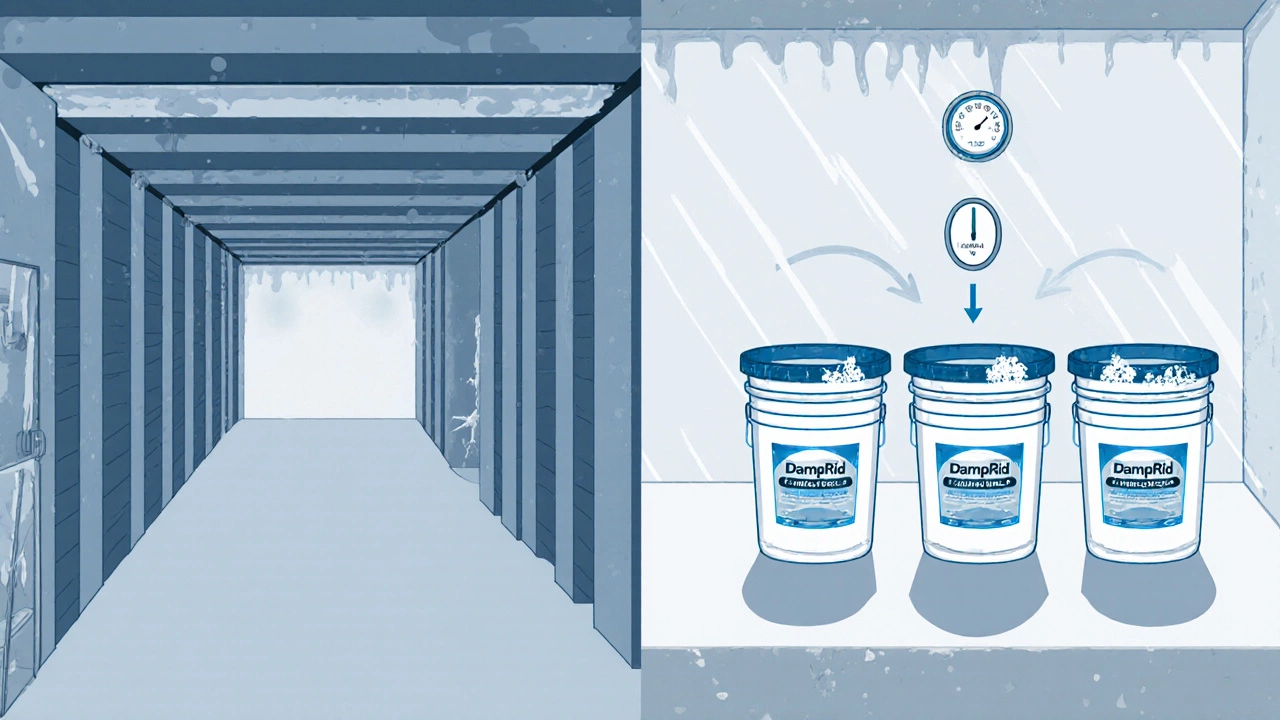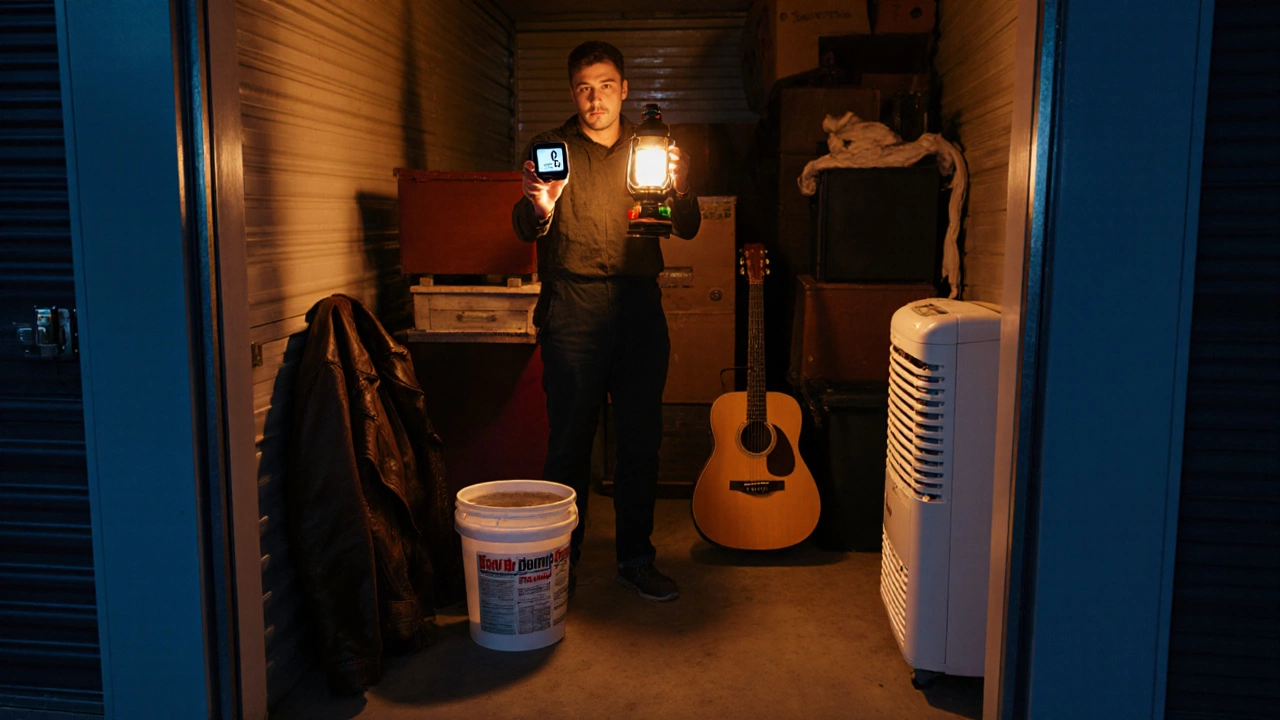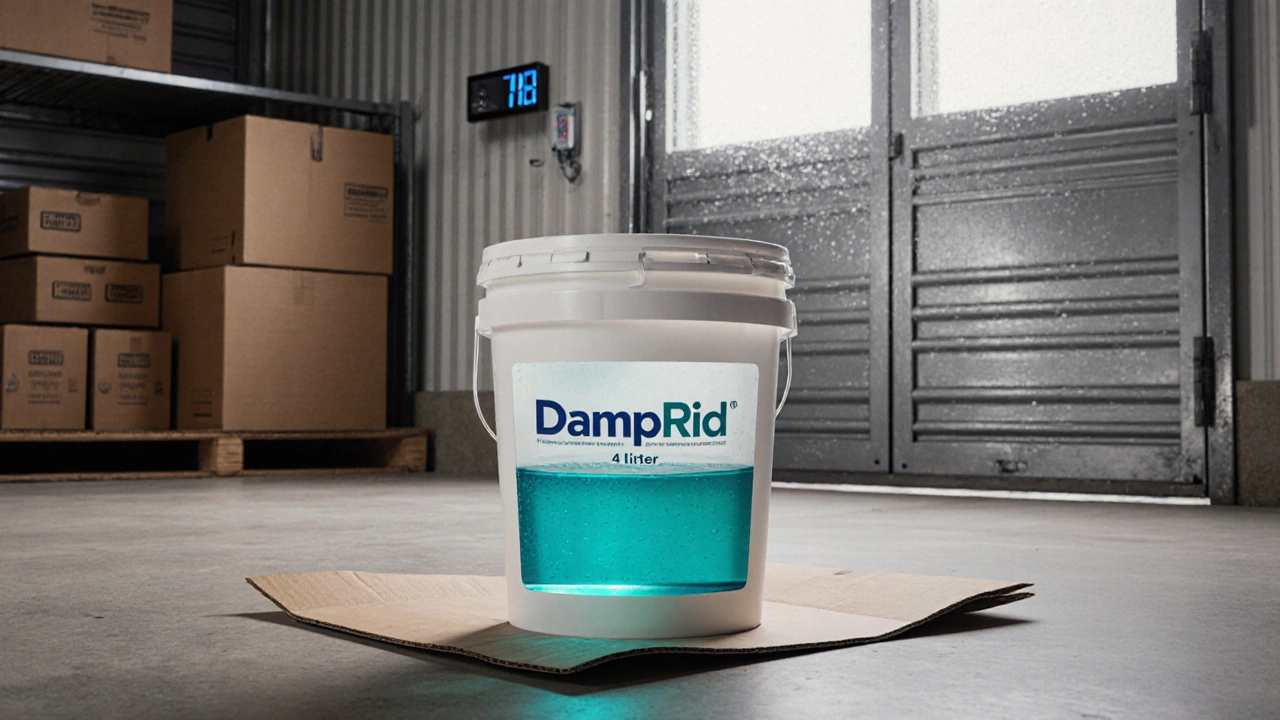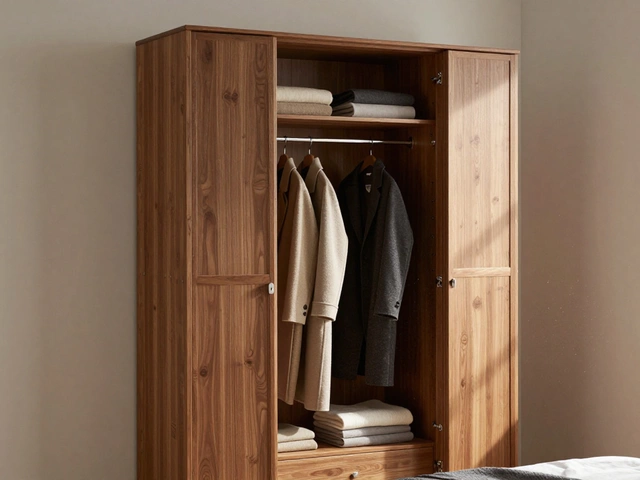Storage Unit Moisture Control Calculator
Recommended Buckets
Humidity Analysis
Recommendations
DampRid is a calcium chloride‑based moisture absorber designed to pull excess humidity from the air. Many renters wonder if this simple product can keep a storage unit dry enough to protect boxes, furniture, and seasonal gear. Below you’ll find a step‑by‑step look at how DampRid works, what conditions in a typical storage unit look like, and whether the product lives up to the hype.
How DampRid Works
DampRid relies on a chemical reaction: calcium chloride draws water molecules from the surrounding air and turns them into a brine solution that collects in a sealed container. The process is passive-no electricity, no moving parts, and no fans. Because the reaction is continuous, a single 4‑liter bucket can absorb up to 5 pints of water before it needs to be emptied.
- Absorption rate: Roughly 0.5 pint per day at 80 % relative humidity (RH).
- Temperature range: Effective from 40 °F (4 °C) up to 95 °F (35 °C).
- Safety: The broth is non‑toxic but should be kept away from pets and children.
In a storage unit, the key is exposure time. The longer DampRid sits undisturbed, the more moisture it removes.
Typical Moisture Issues in Storage Units
Most storage facilities are built with concrete walls and metal roofs, which can trap humidity. Two common problems arise:
- Condensation on metal doors and interior walls when temperature swings between day and night.
- Ground‑level seepage in units without a proper vapor barrier.
Both issues create an environment where mold spores and musty odors flourish. The University of Illinois conducted a 2022 survey of 1,200 self‑storage units and found that 38 % reported visible mold or a persistent musty smell, directly linked to RH levels above 70 %.
Performance of DampRid in Real‑World Storage Units
Several independent tests give us a clearer picture. A 2023 study by the Canadian Home & Garden Council placed three DampRid 4‑liter buckets in a typical climate‑controlled unit (70 °F, 70 % RH). Over a 30‑day period, the buckets each collected an average of 4.2 pints of water, reducing the unit’s RH to about 55 %.
In contrast, the same study ran a small electric dehumidifier (30 pint capacity) in the same unit. The dehumidifier pulled 25 pints of water, driving RH down to 42 % but at a cost of 12 kWh per month.
What does that mean for you? If your items can tolerate RH up to 60 %, a few DampRid buckets are usually enough. If you store electronics, leather, or valuable antiques, you may need the lower humidity that an electric unit provides.

Factors That Influence Effectiveness
Not every storage unit is the same. Consider these variables before buying:
- Unit size: A 10 × 10 ft unit has about 800 cubic feet of air. One 4‑liter bucket handles roughly 1 % of that volume per day at 80 % RH.
- Climate control: Facilities that already regulate temperature and humidity reduce the workload for any moisture absorber.
- Ventilation: Units with good airflow distribute the dry air more evenly, making a single bucket more effective.
- Frequency of access: Opening the door injects outside air, raising RH temporarily. Keep extra buckets on hand if you visit often.
Comparing DampRid with Other Moisture Control Options
| Product | Absorption Capacity (30 days) | Power Required | Cost (USD) | Best For |
|---|---|---|---|---|
| DampRid 4‑L | ~4 pints | None | $15 | Small units, low budget |
| Silica Gel Packets | 0.2 pint per packet | None | $1‑2 each | Short‑term, small crevices |
| Rechargeable Dehumidifier (5 pint) | 5 pints | Battery‑powered | $70 | Portable, no outlet |
| Electric Dehumidifier (30 pint) | 25‑30 pints | 120 V outlet | $180 | Large units, climate‑controlled spaces |
The table shows why DampRid remains popular: low cost, zero power, and easy placement. However, its capacity is modest. For a 10 × 15 ft unit in a humid summer, two or three buckets may be needed just to keep RH below 65 %.

Installation Tips and Safety
Even a passive product can cause trouble if used incorrectly. Follow these best practices:
- Place the bucket on a stable, level surface away from direct sunlight.
- Leave a 2‑inch gap between the bucket and walls to allow airflow.
- Check the liquid level weekly. Most units have a clear window; when the broth reaches the top, replace the bucket.
- Never cap the bucket or seal it; the reaction needs venting.
- Dispose of the brine responsibly-dilute with water and pour down the drain.
When to Choose a Full‑Size Dehumidifier
If any of the following apply, consider stepping up to an electric dehumidifier:
- Your items are highly sensitive to moisture (e.g., vintage guitars, leather jackets).
- Your storage facility does not offer climate control and RH regularly exceeds 75 %.
- You plan to store items for longer than six months.
- You experience visible mold, water stains, or a strong musty odor despite using DampRid.
Electric units can maintain RH between 40‑50 %, which is the sweet spot for most valuables.
Bottom Line: Is DampRid Worth It for Your Unit?
Answering the title’s question directly: yes, DampRid does work in storage units, but its success hinges on the size of the space, the ambient humidity, and how many buckets you deploy. For a modest, climate‑controlled unit where RH hovers around 65 %, a single 4‑liter bucket can keep things dry enough for cardboard boxes and seasonal clothing. In larger, unconditioned units, you’ll likely need two or three buckets, or you might be better off with a small electric dehumidifier.
Bottom line: start with DampRid, monitor humidity with a cheap digital hygrometer, and scale up only if you notice that moisture levels stay stubbornly high.
How often should I empty a DampRid bucket in a storage unit?
Check the clear window weekly. If the liquid reaches the top, pour the brine down the drain, rinse the bucket, and reset it. In very humid climates you may need to empty it twice a week.
Can I place DampRid directly on the floor of my unit?
Yes, but keep it on a piece of cardboard or a small tray to protect the concrete floor from any accidental spills.
Is DampRid safe around electronics stored in the unit?
The calcium chloride solution itself is non‑toxic, but you should keep the bucket away from open circuit boards to avoid accidental contact with the brine.
What’s the difference between DampRid and silica gel packets?
Silica gel packs absorb far less water (about 0.2 pint per packet) and are best for small enclosed items like camera bags. DampRid handles several pints and works for whole rooms.
Do I need a humidity indicator when using DampRid?
A cheap digital hygrometer (under $10) lets you track RH and decide if you need more buckets or an electric dehumidifier.







